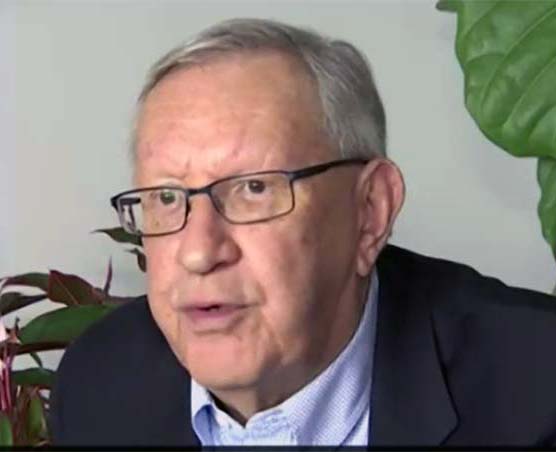Airlines sometimes are the biggest impediment to airport modernization, especially at airports where one airline is the dominant carrier. The move towards more airport self-service options for passengers faces a learning curve not only for passengers but for the airlines themselves.
Changing the way passengers move through the airports takes far more than simply training passengers new airport tricks in terms of self-service check-in and print-at-home boarding passes, the airlines themselves have to be trained and they have to buy into the new information technology (IT) possibilities.
New technological breakthroughs in check-in kiosks and biometrics are allowing more automation of the airline check-in process than ever before. According to the Airport IT Trends Survey 2008, commissioned by Airline Business, in partnership with the Airports Council International and SITA, within the next two years virtually all airports will have implemented remote check-in, passenger notification services, common bag drop locations and bag tracking services with automated boarding gates.
Airports moving in this direction, however, are facing opposition from a surprising quarter of the travel industry — the airlines. What may seem like flexibility and an opportunity from the passengers’ point of view often is seen by airlines as a lost marketing opportunity and a reduction against incursions of other airlines into their markets.
In the case of IT spending on common-use self-service (CUSS) kiosks, airlines have been slow to accept them. These CUSS kiosks allow any passenger to check into any flight on any airline. Airports are already testing these kiosks with success, however Flight Global has reported that airlines often complain that not having proprietary, airline-specific kiosks hurts the development of their corporate identities.
Common-use self-service (CUSS) kiosks deliver on both fronts, and while airports are keen, gaining acceptance from their airline customers is difficult in some regions. The vast majority of airports have a strategy of increasing kiosks, with 67% increasing them mainly for check-in use and 10% mainly for new uses.
Yet in the US in particular the legacy of municipality-owned airports with one dominant carrier, plus powerful airline marketing departments demanding their own branding on kiosks are stumbling blocks.
Seattle-Tacoma Airport has had seven CUSS kiosks in place for just over a year – in the parking garage – and is almost at its target of 1% of passengers using them every day, which eases the pressure on the departure hall process. Airport operations director Mike Ehl’s vision is to allow any passenger to check in wherever they want in the airport, using whichever check-in position they want and whatever security point is open. “We have 285 kiosks today and we would only need 205 to do the same amount of processing if they were all common use,” he says.
Almost a decade ago the New York Times reported, “In the world of air travel, where airlines and passengers are buffeted by the effects of deregulation, a new battle is looming: the fight for control of the nation’s airports.” The article continued:
On one side are the nation’s air carriers. Through a series of long-term leases for airport gates, they have gained powerful control over the airports where they land. Airlines say this is a victory for passengers and the free market. But critics say the carriers are using this power to stifle competition, maintain high fares and block airport expansion.
Beyond dragging their feet implementing state-of-the-art IT solutions, the airlines are engaged in a battle for airport terrain. The control of airport gates that US airlines are reluctant to release is a blockade to better customer service. This control of boarding gate is used as a barrier to new entrants. For instance, in Boston, Northwest Airlines (NWA) refused to give up gates even though it didn’t need them — NWA wanted to block AirTran Airways from expanding in Boston where they were limited by the use of only one gate. A tripso.com post five years ago pointed to this problem:
According to Massport, Northwest Airlines controls six gates at Logan Airport in Boston and has 30 departures or arrivals each day.
Just down the walkway, AirTran has only one gate and with 20 arrivals or departures each day. Boston would have more low-cost flights if AirTran could get additional gates.
The hoarding of gates also was a factor in the long delays of plane on the runway and tarmac during the Valentine’s Day snowstorm two years ago. Airlines whose gates were occupied could not offload passengers even though there were plenty of available gates — but they belonged to other airlines. This antiquated system of leasing gates to individual airlines also causes the delay of airplanes waiting for “their gate to open.”
Only last year, Atlanta Airport began to keep airport control of various gates based on airline usage. The gates have been a sore point between the airport and its two hub airlines, Delta and AirTran, as both airlines sought the gates’ exclusive use.
The Atlanta airport is gate-constrained, and hadn’t added gates since building the international E concourse prior to the 1996 Olympics.
“We use the gates for the best interests of passengers, and also to make sure the gates are fairly allocated. We try our best to make sure that Delta and AirTran both get to use the gates. The good news here,” DeCosta said, “is that AirTran is able to expand to destinations and have more flights, which is good for Atlanta.”
Slowly, the tide is turning. Airlines, buffeted by their personal financial crisis have had to relinquish control at many airports as part of a financial restructuring and the airports are beginning to regain control of their product. New federal regulations are also allowing airports to maintain more control over gates, security, check-in facilities and arrival procedures. As the tight hand of the airlines is relaxed new technologies will find their way into our airport experience.
Globally, airports are moving forward with far more vigor than in the US. The first changes allowing a complete check-in to boarding procedure will probably be introduced in Asia, Australia or Europe well before any US airport dips its municipal toe into the new IT waters. The Flight Global article concludes with a look to the future.
Few airports have enabled additional functionalities for their kiosks to date but within the next two years 17% are planning to implement kiosks for transfer services, 11% kiosks for mishandled baggage and 7% kiosks for disruption management. Airports are also looking beyond the kiosks to implement new technologies to give passengers, as Smith puts it, “an experience of ease” within the confines of processes that have to take place at an airport.
Automated (self-service) passenger boarding gates look set to be installed at 45% of airports within the next two years. In the same time frame, implementing remote passenger check-in projects looks set to rise to 56% passenger tracking/flow management tools to 35% and registered traveller programmes to 38%.
The airlines are learning the hard lessons that making passenger boarding and luggage check-in as easy and as seamless as possible are actually better for their business than having their airline logos plastered on kiosks with long lines of passengers milling about their branded check-in area. Passengers, once they use the new kiosk technology and print boarding passes at home, learn that these new IT changes are saving them time. And perhaps the less time they spend in front of a branded airline employee is better for their traveling state of mind.

Charlie Leocha is the President of Travelers United. He has been working in Washington, DC, for the past 14 years with Congress, the Department of Transportation, and industry stakeholders on travel issues. He was the first consumer representative to the Advisory Committee for Aviation Consumer Protections appointed by the Secretary of Transportation from 2012 through 2018.

